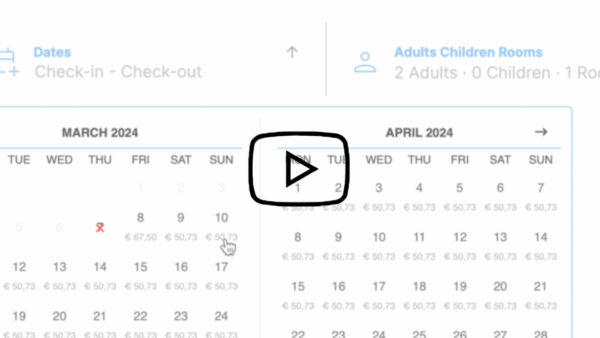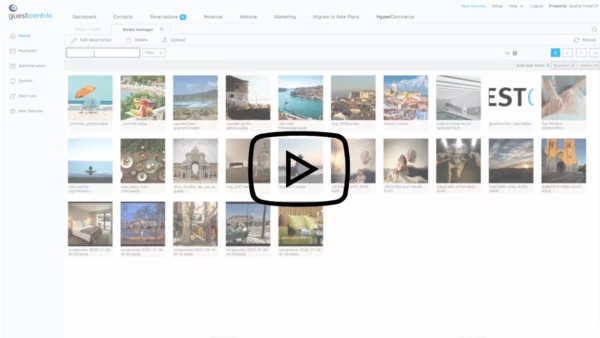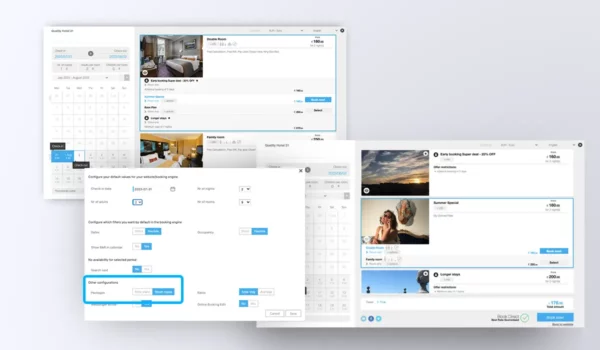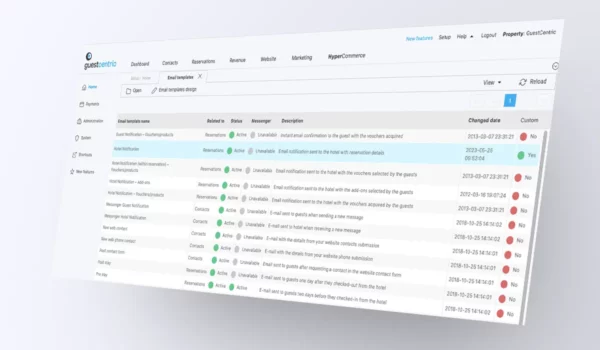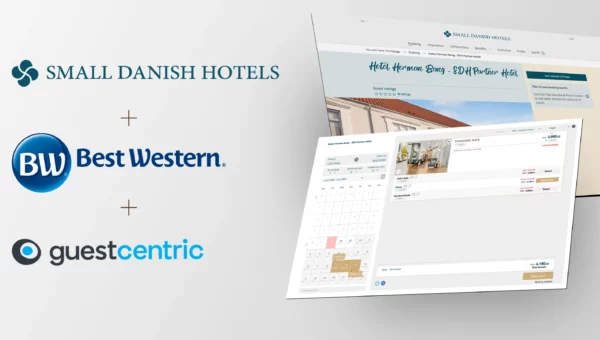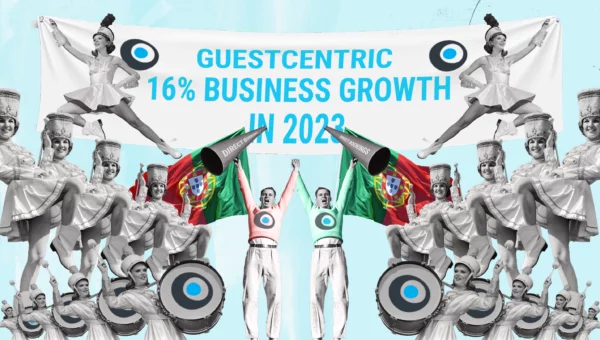How Hotel Managers Can Become More Data-Driven To Increase Direct Revenue
Reading Time: 5 minutesThe greater insight hoteliers have on their position in the market at any given point in time, the greater confidence they will in setting rates, controlling distribution, and working with the right partners. Keep reading this article to find out how you can use data to make smarter business decisions for your hotel!
How Hotel Managers Can become More Data-Driven to Increase Direct Revenue
Data is critical in today’s business climate, empowering hotels to implement smarter pricing strategies and adapt to ever-changing guest behaviours and preferences. Here are 5 tips on how Hotel Managers can become more data-driven to increase direct revenue.
1. Implement a data-driven revenue management and distribution culture
One of the biggest challenges is the lack of data-driven Property Managers, General Managers and Revenue Managers in the industry.
Hotel Managers today need to have strong analytical skills, be interested in big data processes, keen on new technologies, have the ability to make quick decisions based on revenue data business forecasting, and be able to lead and coach a team. This relies on excellent communication skills and team focus, moving towards a transversal approach to different departments.
More important is achieving a revenue management culture where each employee understands the role they play in revenue generation and how each department can contribute to the success of the hotel. The Revenue Manager as the lead ambassador of cultural development needs to ensure that the workforce is participating in meetings, are a part of decision-making, and are being listened to.
General Managers and Revenue Managers also need to be able to deal with distributors and tech providers to build strong relations and negotiate deals. With the quickly changing sales and distribution landscape, every Hotel Manager needs to be continuously learning and updating their skills.
The good news is that a wealth of technological resources now alleviates the headache of manual data consolidation and number crunching to look at the visualization of market trends and activity. This new layer of technology gives Revenue Managers the power to make decisions quicker, and develop new rate plan structures to tap into new markets and create more segmented offers.
2. Always know who is selling your inventory and at what price
Research by RateGain reveals that up to 98% of 4-star hotels offer their rooms cheaper on OTA sites rather than on their own. How can you expect customers to book directly with you at a higher price than carrying out the same process via an OTA?
An effective hotel channel management strategy is imperative for maintaining the partnerships and business relationships that are necessary in order to optimize sales and maximize revenue.
A hotel distribution channel manager allows you to centralize all of your different distribution channels and manage operations connected to them, all from the same place. These solutions can be cloud-based or software-based and management operations can be carried out in real-time.
Through the use of a distribution channel manager, all parties involved in the distribution of hotel rooms or other hotel services can gain live access to key information, such as rates and availability.
Some of the benefits of effective channel management include:
- Optimize direct bookings and revenue
- Avoid overbookings
- Visibility of pricing on different channels
Furthermore, some channel managers even offer sophisticated features that allow you to pre-select rooms exclusively for direct reservations, re-import reservations from OTAs which have not synced to your database and automatically stop sales across all channels.
3. Use Data To Implement Dynamic Pricing Strategies
Let’s face it, determining the right pricing strategy for your hotel is no easy task, given the array of factors to consider including occupancy, seasonality, guest segments, and competitor prices.
This is where market intelligence and your own property data can help inform your business decisions and help you successfully execute the following dynamic pricing strategies:
- Occupancy-based dynamic pricing: This approach involves pricing your hotel rooms based on supply and demand. You must increase your room rates when demand exceeds supply. For example – if 45 out of 50 rooms are occupied, you can charge more for the remaining 5 rooms.
- Forecast-based pricing: This strategy is all about adjusting your hotel room price whilst forecasting the number of rooms potentially available for future dates. To implement this, you should have a clear understanding of your hotel’s historical occupancy data for the last couple of months, and for the same period during the previous year.
- Competitor-based pricing: You can only come up with this strategy when you understand what your competitors are charging. Start by reviewing the OTA channels you currently utilize and take note of what they offer.
- Length-of-stay based pricing: This is also referred to as Best Available Rate by Length of Stay. Under this hotel pricing strategy, you can make changes in your room rates based on both the arrival date and the total duration of a guest’s stay. To come up with the right pricing, you need to review demand, forecast, business on the books, and even the price sensitivity.
These are just a few ways that data can help you implement dynamic pricing strategies that will ultimately improve your bottom line.
4. Analyze Your Hotel’s Net Profit Across All Reservation Channels
Although maximum online visibility makes it easy to ride on the coattails of OTAs to generate reservations for your hotel, you need to ensure that your property does not become over-dependent on intermediaries.
Instead of reviewing the demand level for each channel, analyze the net profit for each channel. The net profit from a channel is simply the revenue from that channel, minus all costs associated with it (advertising costs, commissions, etc.).
Here are some questions you should ask when evaluating your net profit on each channel you utilize:
- How much does each channel return when commission costs are accounted for?
- What’s the Average Daily Rate for the channel? It may surprise you to see it’s your brand site delivering that higher ADR! Do your own analysis, and remember: numbers don’t lie.
- Research which days of week bring in the most bookings from each channel. Are some channels simply cramming the higher demand dates for your hotel and contributing less to other nights? If so, it might be wise to evaluate how much availability you offer to those channels.
You should also analyze the spend and lifetime patterns of each channel to understand if they have steadily improved or decreased the amount of revenue they bring in, whether they have non-revenue benefits (like exposure) that outweigh their costs, and more.
Yes, the rate is low and the commission can be high – but the exposure is great! Exposure, however, doesn’t pay the bills. You need to analyze the lifetime value of guests that came to you from OTAs.
Did they book again? Did they spend more than guests from other channels? Finding the answers to these questions will help you determine which channels boost your hotel’s profitability and those that hinder it.
At the end of the day, when you evaluate the return on investment from each channel, you can only get a true picture of its value when you also understand how much you pay toward that channel compared to what you get in return.
5. Know your Customers’ Online Journey and Booking Behavior
A recent report by Google and Phocuswright reveals that nearly 6 in 10 travelers believe brands should tailor the information based on their personal preferences or past behaviors. Nearly 80% of travelers may be more likely to sign up for your brand’s loyalty program, while nearly 40% would pay more in return for receiving more tailored information and experiences.
Our own research reveals that personalized messaging featured in shopping activation and shopping recovery widgets not only reduces booking abandonment rates but lifts direct bookings by up to 60%.
All this demonstrates the importance of knowing your customers’ online journey and booking behavior so that you can tailor their experiences so they are more likely to book directly on your website. You need to understand what your guests want in order to provide relevant offers and experiences to them. Helpful resources to find such information include surveys, online reviews, and Google Analytics.
By exploring existing data from various sources, you will be better able to give your guests what they want.
Conclusion
As new technologies and evolving consumer behaviors make the hospitality playing field more and more competitive by the minute, the strategic application of data and analytics throughout the revenue management process is paramount.
Incomplete or inaccurate data ultimately results in missed opportunities and money down the drain. However, if you understand the importance of obtaining high-quality data and business intelligence from reliable sources, you can get a clearer picture of the market and what is shaping and driving demand.
By following the steps outlined above, you will not only increase your chance of developing a stronger connection to your customers but also of increasing direct reservations. This will ultimately impact your bottom line.


